You can track the evolution of JJ’s Wine, Spirits & Cigars in three stages: JJ’s 1.0, 2.0 and 3.0. That is how owner Tom Slattery thinks of his Sioux Falls, SD-based business, and how much it has grown and changed since 1998.
Retail Evolution
JJ’s 1.0 would have a hard time recognizing its current iteration. First opened in 1998 by Founder Tom Howes, JJ’s 1.0 wasn’t even its own shop. Howes specialized in convenience stores. Recognizing a retail need in the Sioux Falls community for high-end wine and spirits, he allocated space in his newest convenience store for those beverage alcohol products.
To develop and run this section of the business, Howes recruited Slattery.
Years passed. In the summer of 2005, after significant growth in alcohol sales and also in their Sioux Falls community, Howes and Slattery saw opportunity for a standalone retail shop. Howes owned property to the south of his convenience store. That’s where he constructed a two-business building: space for the 6,000-square-foot JJ’s 2.0, plus a second tenant.
Slattery managed JJ’s 2.0. When Slattery turned 40 in 2010, Howes presented his longtime employee with the opportunity of a lifetime. Slattery could buy JJ’s. With the assistance of a willing bank and good friends, Slattery and his wife put the deal together. The business re-opened under new ownership in 2011.
“From there on, we continued the trajectory of double-digit growth towards the end of 2013,” Slattery recalls. “Then that year we were facing a major road construction in front of the business that, frankly, almost put me under. That’s when I decided the business needed to be less about bottles and boxes, and more about experiences for the customer. I began developing a more experience-based business model.”
In an additional the construction challenge, the coffee shop adjacent to JJ’s 2.0 caused parking problems in their little parking lot. Slattery knew it was time for a big change.
Developing Experiences
The rise of American whiskey and JJ’s coincide. Slattery remembers the days when he had cases of Pappy Van Winkle and W. L. Weller that nobody wanted to buy. “Our entire state’s allocation was coming to me,” he recalls. When Slattery was negotiating for the store in 2010, he had to put these world-class whiskeys on sale for $99.99 each, in order to deplete inventory in advance of his business purchase.
How times have changed. And Slattery was perceptive in noticing this change. He leaned into the brown spirits boom to help fuel his business’ evolution into JJ’s 3.0.
In 2014, as Slattery was developing ideas for his experience-based business, he visited Kentucky for his first single-barrel store pick. “I was hesitant because it was so expensive, but I knew I needed to develop something that was unique to us,” he recalls.
He brought back 146 bottles of Knob Creek Single Barrel Select. They sold out in about 45 days. “From then on, I was hooked,” Slattery says.
Trips to Kentucky for single-barrel picks became a tradition for Slattery, his staff, family, friends and even customers. In 2018, Slattery invited some customers to come with him. They kicked in cash and together chartered a private plane.
Altogether it goes towards the differentiator that JJ’s is not your average retail store. More than just shopping, it’s a place where customers can have unique and authentic experiences.
“Everybody comes back from Kentucky with a story to tell,” Slattery explains. “And the more people you can take on a trip, the more stories you can tell.”
JJ’s 3.0
In search of a better business location, Slattery reached out to a developer in 2017. He preferred to stay locally, as “our neighborhood is our blood.”
Construction began in October of 2017 on a new, 15,000-square-foot store. Filling that much space with inventory was not the best use of money, Slattery decided, so he bought an on-premise license and also opened a cocktail bar inside of JJ’s 3.0. The new store opened in June 2018.
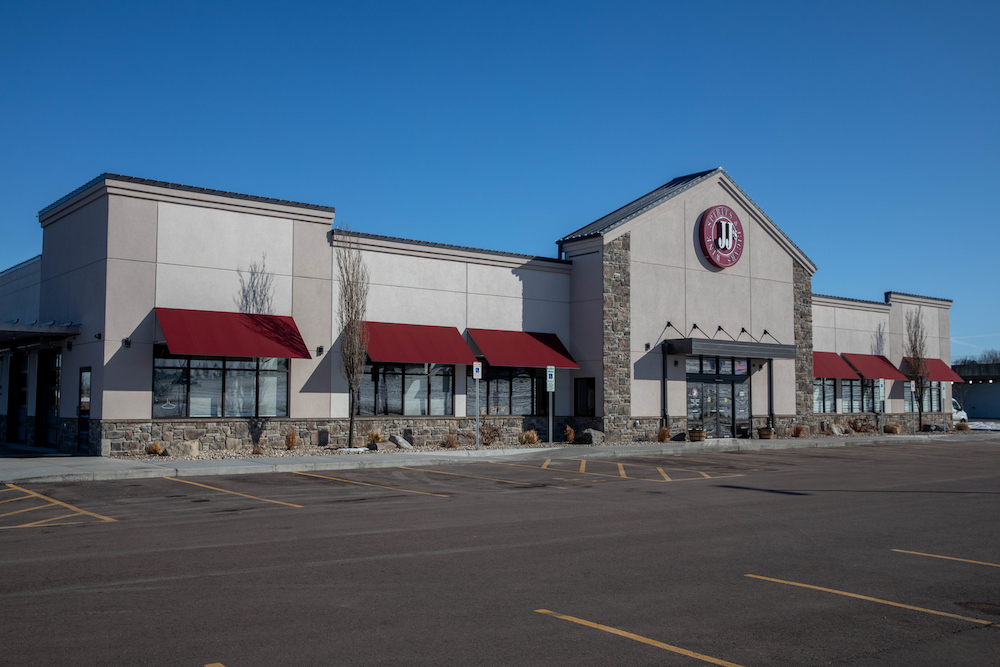
And as the Kentucky trips increased in frequency — bringing back more bottles across more brands — JJ’s staff could now serve cocktails made with JJ’s single-barrel whiskey. The store also boasts a tap system with 16 beers, including 10 brewed within 21 miles of the business.
“What we’re doing now is an entirely experienced-based business concept,” Slattery says. “We want to elevate people’s experiences, whether they’re shopping, or drinking cocktails, going to events here, or are buying our drinks at private events.”
To that end, JJ’s is developing local relationships to serve alcohol at offsite events. This includes a local concert series organized through the Levitt Foundation, helping promote performance arts in the Sioux Falls area. Over the course of 27 summer concerts, JJ’s offered attendees a full array of cocktails and local craft beer, served from a draft trailer.
“I hired 45 additional staff for this,” Slattery says. More than just serving alcohol, JJ’s took on a large role in organizing the concerts. “It goes back to the core mission of elevating the customer experience,” Slattery explains. “And it allowed us to be a part of something cool in an area of town where we don’t have much of a brand presence.”
Through other creative projects, JJ’s 3.0 was able to grow its brand even more.
The Boozy Bakery
Among the more notable parts of the store is The Boozy Bakery.
Opened in July of 2018 under the management of Slattery’s wife Jean, the bakery runs a full kitchen with gas and convection ovens. As you might guess from its name, this bakery specializes in recipes that incorporate alcohol. It took some legislative wrangling, Slattery recalls, but the result is a unique in-store asset.
Best-sellers include caramel Bailey’s brownies, and bourbon pecan mini pies. Customers can also purchase whole cakes, bunt cakes, brownies, cupcakes, mini cakes and more — all made with alcohol. Around the holidays, seasonal specials include boozy lemon tarts and creme de menthe mousse.

“In addition to the traditional ways of baking cakes and brownies with alcohol, we also brush cakes with booze, and use it in the filling between layers,” explains Jean, who previously ran a catering business.
The bakery also produces non-alcoholic cookies and brownies for customers’ kids, or anybody who prefers no-ABV. Gluten-free options are also available. One member of the baking staff is in charge of making food ordered from JJ’s bar. This is mostly flatbread pizzas, cold dips and cheese boards — all made freshly onsite. The bar fare is also pared with specific wines and other drinks.
Jean and her staff advertise The Boozy Bakery through social media. “Most people who come into JJ’s looking to buy booze, not dessert,” she explains, “so we’ve had to drive up our own business through Facebook, which has worked very well.”
This includes raffle giveaways of mini cheesecakes, with prizes going to people who correctly answer a Facebook quiz.
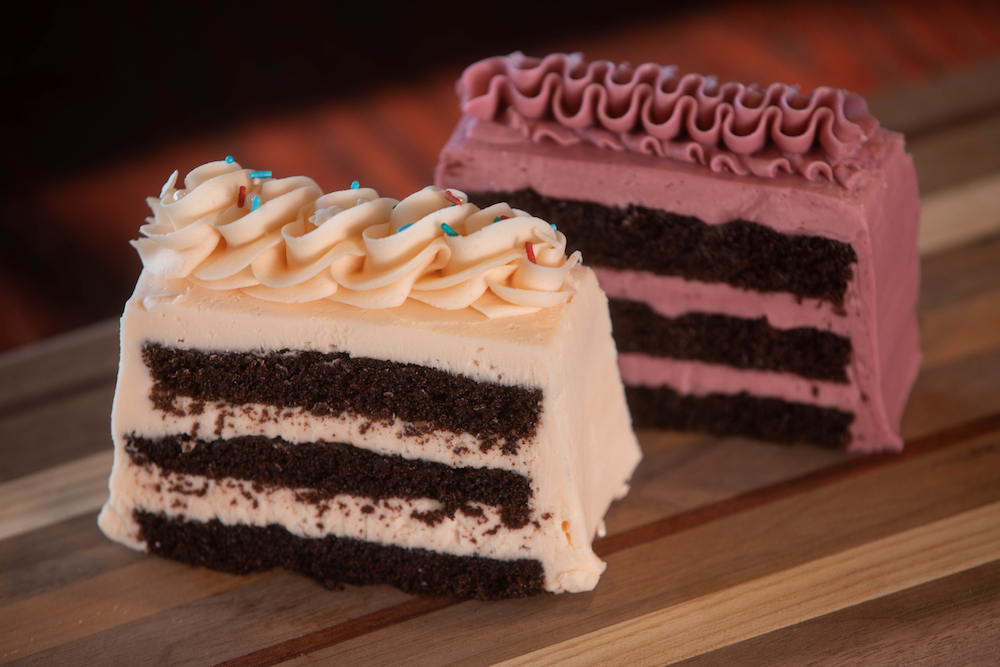
Throwing Axes
After moving out of the space for JJ’s 2.0, Slattery still held the lease for that nearby building. He researched possibilities for the extra space, and, naturally, landed on axe throwing.
That’s how JJ’s Axes & Ales was born. A “$5 Uber ride away” from the current retail location, the old space now contains three axe-throwing cages with two targets apiece. Legally, each cage can hold up to 10 people.
“We sell beer and wine there on-premise,” Slattery says. “Initially, we had contemplated selling beer off-premise from there as well. But it became clear that nobody wanted to stop at an axe-throwing venue on their way home from work to pick up beer at retail.”
Well-established rules govern the axe throwing. Everybody first signs a waiver. Anyone who shows up intoxicated is turned away. Participants are limited in how much they can drink directly before and during the activity. Axe throwing takes place in a controlled environment, under the supervision of a certified instructor.
Staff and Training
Staff education at JJ’s 3.0 emphasizes tastings. “We rely on our distribution reps to bring in new products, and revisit those that are on the shelves that new employees haven’t tried yet,” says General Manager Zac Johnson. “We’ll get together and jot down notes and discuss the products: What exactly is it, why those flavor profiles, and so on.”
“Whether or not you like a product is irrelevant,” Johnson continues. “Everyone’s taste profile is different. You’ll find things you don’t care for, but you should not be so close-minded that you cannot turn other people onto it.”
Education continues when staff goes on Kentucky trips for barrel picks. “It engages employees and helps keep them around,” Johnson says. “They come back with stories to share with customers. And that gives the customers confidence that we know what we’re talking about.”
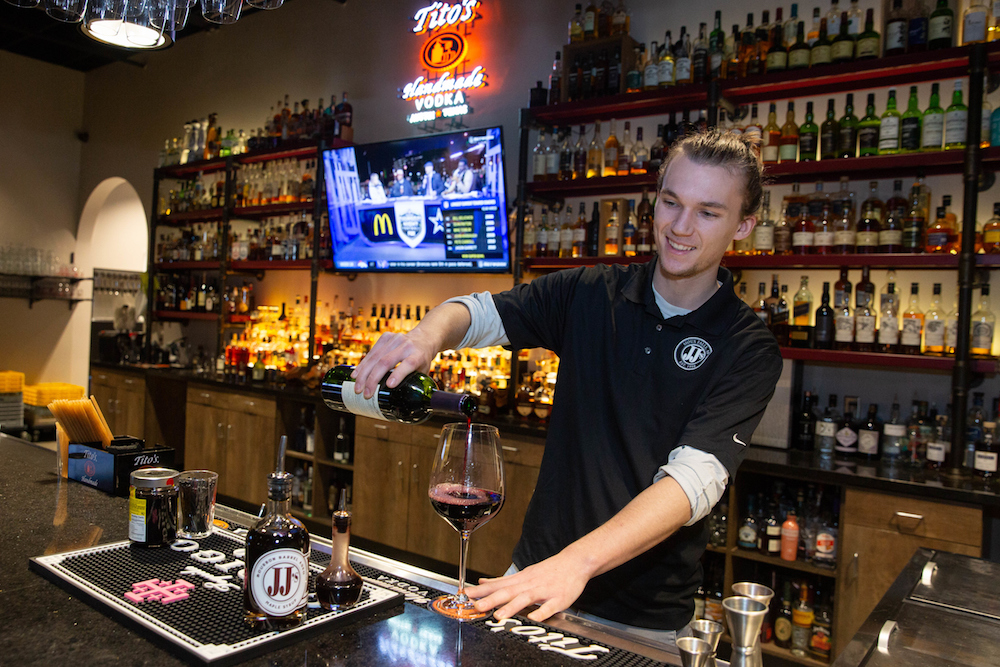
When seeking new staff, JJ’s looks for people eager to learn. Staff willing to buy into the industry, and keep up with its constant evolution.
“We want people who are flexible, who will put in the time and understand that it is not immediate gratification,” Johnson says.
About 90% of JJ’s employees have been on staff for at least eight months. A few, like Johnson, are approaching their two-and-a-half-to-three-year mark.
Local Customer Service
JJ’s staff learns to ask a lot of questions to determine exactly what the customer wants. This includes what styles or varietals they prefer, price points, food pairings and whether it’s a gift for somebody.
Working for a small business within a small community, JJ’s employees know many of the customers from outside of the store. It helps staff pick out the perfect gifts.
“We put a big emphasis on developing friendships,” Johnson says. “We know what many people in the community like to drink. We can recommend gifts. We know what is and isn’t in their collections.”
“People outside of the store will say ‘hi’ to me and my fiancé,” he adds. “It’s cool, because we’re building a community within a community. We’re interacting within the town and becoming friends with everybody.”
Handling Whiskey Allocations
Nine months ago, JJ’s launched Whisk(e)y Wednesdays. Led by Johnson, this includes whiskey education, along with half-priced whiskey flights at the bar. Tips from these days are donated to local charities. Johnson also writes a blog on the JJ’s website as part of the promotion.
“These are some of my most rewarding days,” he says. “It evolved from product tastings to now we’re using our bar with 300 opened bottles. We pick different pairings each week, whether that’s flavor profiles or a specific distillery. Several customers have been down to Kentucky, and I always love to hear what they have to say.”
“It’s an engaging experience for everybody,” Johnson adds. “People can appreciate what they’re drinking a little bit more.”
JJ’s has further tapped into the popularity of whiskey with how the store handles allocated bottles. Rather than a raffle or auction, the business has set up a points system that rewards its most loyal customers.
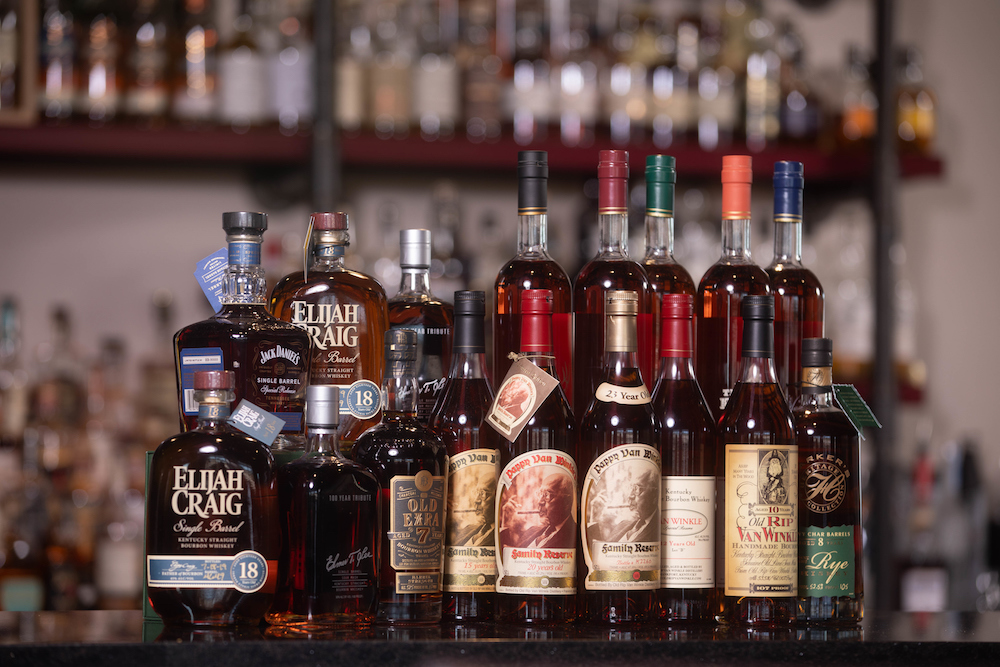
JJ’s assigns points to certain bottles, with store-pick single-barrels typically worth the most. Through POS software, Slattery keeps track of who buys what, and how many points they have earned. Customers who accrue the most points receive dibs on allocated bottles.
In this way, JJ’s makes ensures that rare whiskeys go out to the most loyal customers, who have displayed the greatest interest in the category.
Once a customer buys an allocated bottle, they cannot purchase that same product for five years. But they continue collecting points, with the ability to buy other allocated SKUs. And JJ’s sells these highly sought-after whiskeys at regular retail price.
“I could obviously turn a larger profit on these bottles, but instead I’m adding on profit through other activity,” Slattery says. Like pointing more customers towards the single-barrel program, where JJ’s enjoys excellent margins.
“When you hold an auction or a raffle for these products, you’re not cultivating a relationship with your customers,” Slattery says. “With our point system, we’re really getting to know people.”
What’s Next
JJ’s 3.0 also contains a 120-square-foot walk-in cigar humidor, plus a 1,200-square-foot event space. The store rents out this flexible space for private parties and events, while also hosting winemaker dinners and new-product expos, helping introduce customers to more brands.
“We’re not filling the event space to capacity yet,” says Slattery, “but we’re doing enough there to keep us busy.”
Given the experience-based business model of JJ’s 3.0, it’s only a matter of time before this space becomes another consistent way that the store elevates alcohol retail for its customers.
Kyle Swartz is editor of Beverage Dynamics magazine. Reach him at kswartz@epgmediallc.com or on Twitter @kswartzz. Read his recent piece Does Terroir Matter in Whiskey?

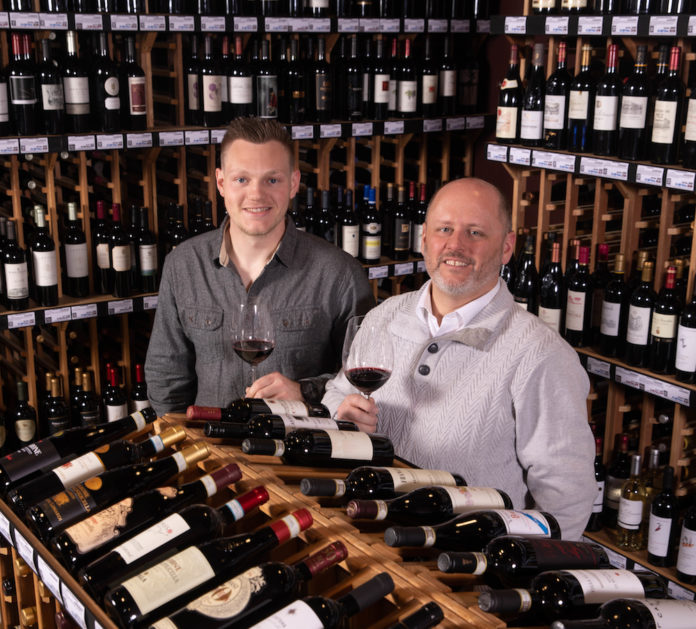



Good story, but here’s another one. An industry veteran of some 20+ years got cut loose by his employer after it was acquired by another industry giant, so he decided to start his own retail store. Purchased a Pentecostal Church in the heart of the bible belt when the congregation it housed outgrew it after many years and built a much larger structure a few miles away. Remodeled the church building’ s interior and disguised some of the exterior, operating for some 24 years until selling out and retiring.